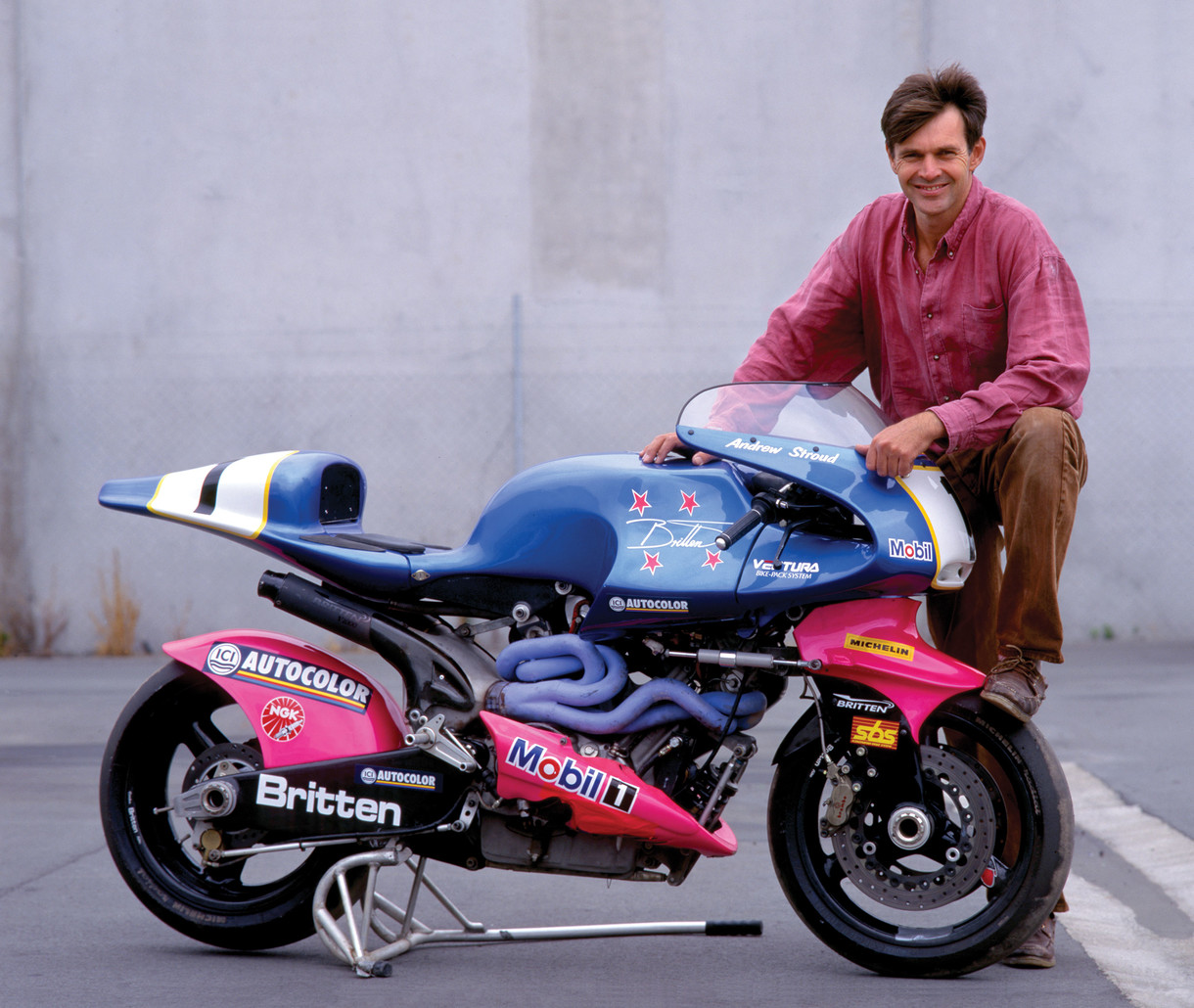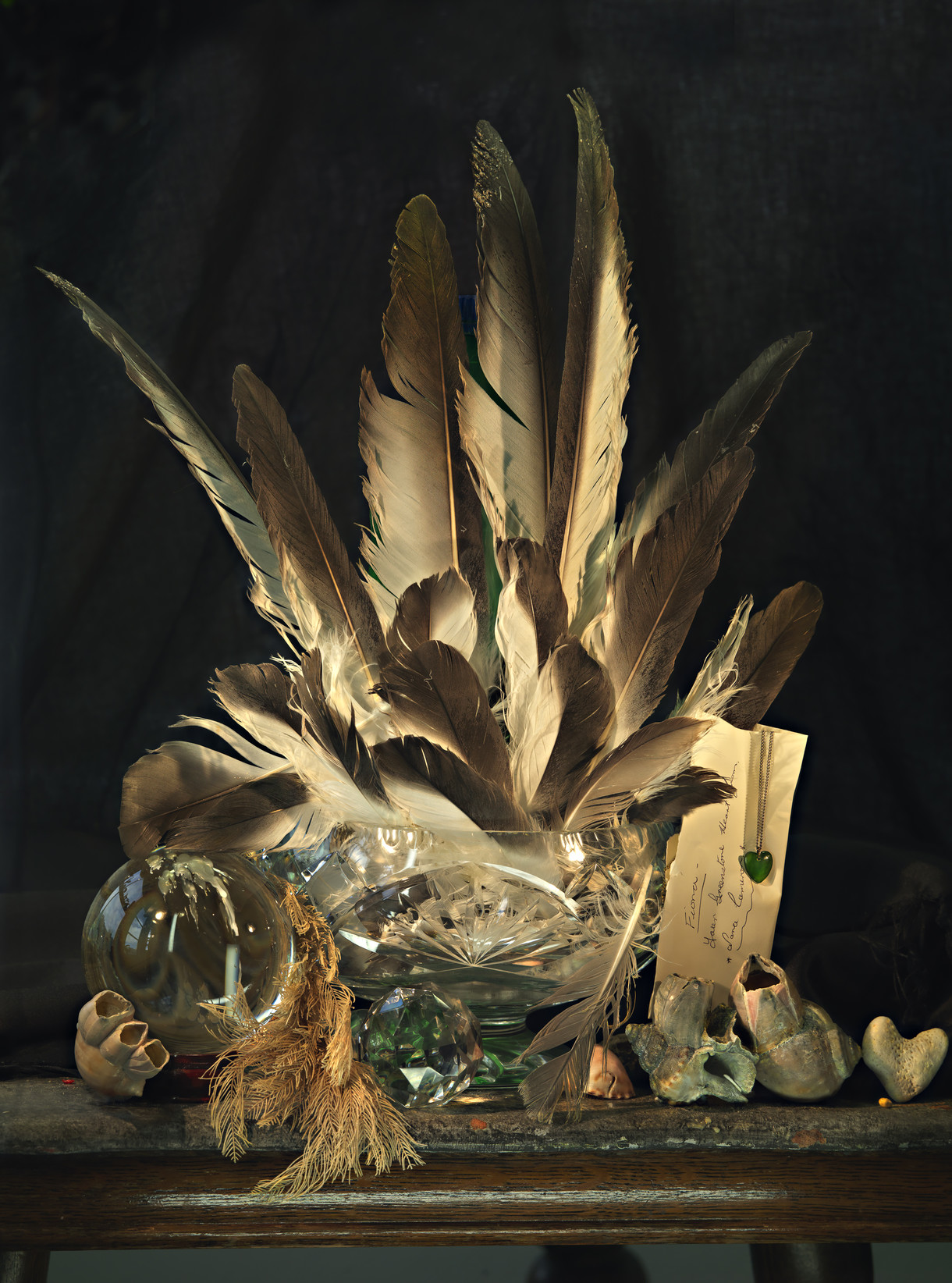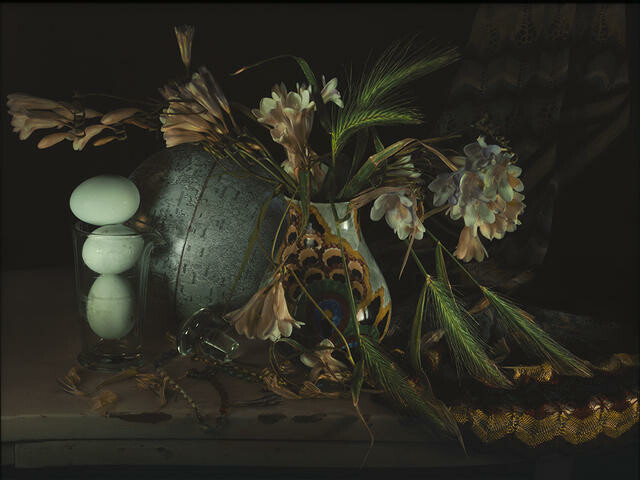
Artist Fiona Pardington with Sheelagh Thompson in July 2016
Another Big Step Forward
Since mid July we’ve been enjoying the first major exhibition change downstairs. While it was difficult to say goodbye to Unseen and Op + Pop – and to be rid of the colourful castor sugar (some 600kg were required) with which Tanya Schultz made Pip & Pop’s Newest New World – it’s now so rewarding to be the final venue for City Gallery Wellington’s exhibition of Kāi Tahu photographer Fiona Pardington’s A Beautiful Hesitation. Designing the display and augmenting the content of this show for our audiences feels like another big step towards being fully operational.
And artist Billy Apple’s homage to Christchurch’s John Britten – the inventor of an amazing motorbike, still some 25kg lighter than any other racing bike – is itself amazing. To work with such an exacting and precise artist as Apple is an extraordinary event in any Gallery’s calendar; he’s improved the space within which he’s worked as well as presented the components of GREAT BRITTEN! and it’s such a privilege for us finally to realise a project we’ve had in our notional programme since before 2011.
When they visited, both Apple and Pardington reinforced what an amazing team we have at Te Puna o Waiwhetū Christchurch Art Gallery. My grateful thanks on the city’s behalf to all involved in the development and presentation of these exhibitions.
Of course, Apple and Pardington’s art is very different, but there is a key link inasmuch as both artists re-present key objects for our consideration and admiration. Apple’s project is a homage; he presents us with a motorbike made by an inventor he knew and admired and he reminds us of its amazing prowess and success. On the other hand, Pardington delves into the storerooms of natural, medical and social history museums and archives to present us with less celebrated objects: birds and feathers, death masks (which fascinated French ethnographers), and soft-porn magazine images from the 1950s. She also assembles and photographs still-life arrangements of birds and beasts; of flowers, shells and globes.
When she captures what’s been ordered and collected in her precise and beautiful images, they are shown for our reconsideration, but also, importantly, to allow us to reflect on where we’ve been and the basis of our knowledge. It’s been wonderful to be able to enhance A Beautiful Hesitation with additional work from our own collection, and we thank Canterbury Museum for its loan of Arthur Llewelyn Barker’s original letters to his uncle.
This exhibition has been the perfect moment to introduce our visitors to the great generosity of Sheelagh Thompson, who gave the Gallery the means to buy a new work by Pardington, Still Life with Wild Wheat and Freesia, Waiheke. It’s such a treat to be able to acquire a beautiful work that is contemporary, but calls to mind some of the Dutch still lifes in our current Treasury exhibition upstairs.
Continuing with local generosity, I am thrilled to announce another recent gift to our collection. It’s a small but important early watercolour of Christchurch by Emily Harper, one of the daughters of the first bishop, Henry John Chitty Harper and his wife, also Emily. Painted in 1857, it is no doubt one of the earliest paintings made by a woman in this part of the world – showing us the promise of the new world she and her family came to only the year before and giving us insight into how unfamiliar it would have been for them. Then, like now, Christchurch presented such a range of opportunities.
This time we thank the Acland family for their gift – we’ll be very pleased to show it soon. Christchurch from near Gloucester Street Bridge is available on our website and by appointment, and well cared for in its new home. Rick and Nina, the immediate Acland donors and both dear relations of mine, hope that their gift will encourage others. We salute them and agree!
In this issue we hear from writer and sailor Matt Vance, who takes us on a trip into the unknown, looking at optical tricks that the ocean can play on the unwary and using our exhibition Reading the Swell to illustrate his thinking. Also heading into the unknown were artists Tony Fomison, Allen Maddox and Philip Clairmont during the late 1970s. To mark the acquisition of Maddox’s No Mail Today – the first work by the artist to enter our collection – we’re illustrating two photographs of the trio by Marti Friedlander, as well as an extract from her fascinating autobiography. And Peter Simpson, who has written for this magazine on a number of occasions, looks at Colin McCahon’s Christchurch years – a fruitful and creative period, from which two major recent acquisitions to our collection have come. There is only one direction and Canterbury landscape show very different sides of McCahon, but Simpson places them in context, as major changes in circumstance came to bear on the artist’s output at this time.
From the aggressive displays of outsider status flouted by punks to the bewigged respectability of the judge’s bench, curator Ken Hall takes his exhibition Bad Hair Day as a starting point for a serious look at the use of hair as a cultural signifier. And senior curator Lara Strongman talks to Ronnie van Hout, the most recent artist to be installed on the exterior of our building – quite literally, as van Hout’s work is a strange large-scale conflation of his hand and face that glowers out across the north-west of the city from our rooftop. He talks about growing up in the Christchurch suburb of Aranui, and of his fascination with open skies and aliens.
Assistant curator Nathan Pohio looks at Fiona Pardington’s early photograph Moko, and finds it at the start of the artist’s exploration into her Kāi Tahu heritage. We’re pleased to be able to republish Tusiata Avia’s ‘St Paul’s Trinity Pacific Island Church’, a poem which mourns the loss of a piece of local heritage. And Alice Barclay, a University of Canterbury student who recently completed a project on our Barry Cleavin archive, writes on the sometimes disquieting experience of digging around in the private thoughts of an artist.
As always, our quarterly Bulletin is a great source of institutional pride. Through this vehicle, we celebrate our supporters and TOGETHER partners; we enhance and explore what we collect, show, do and think in and around the Gallery. Through Bulletin we communicate the roles of an art gallery with responsibility for a major metropolitan collection in New Zealand. It makes our work available to a wider world, reaching beyond our local visitors and enhancing our reputation as explorers and collaborators. Like Fiona Pardington and Billy Apple, we are presenters of ideas and images that matter.










